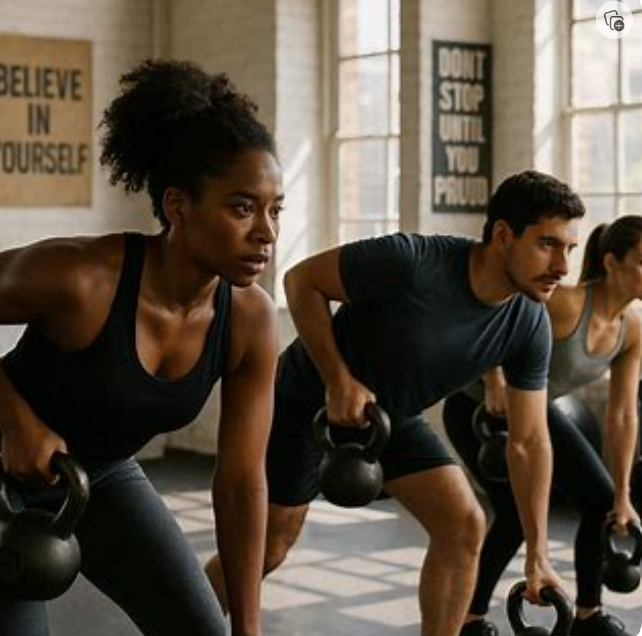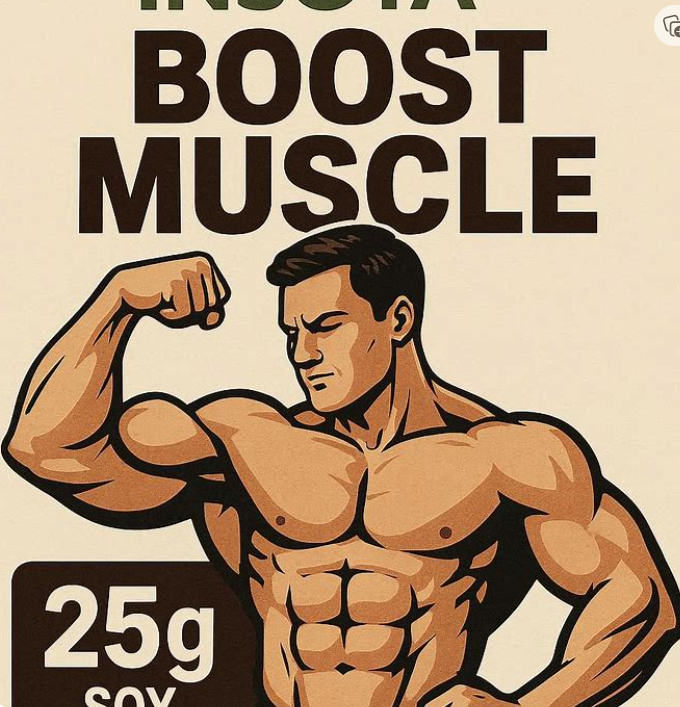Kettlebell workout routines have revolutionized home fitness, offering a versatile way to build strength, burn fat, and improve endurance all in one. In this comprehensive guide, we’ll dive deep into everything you need to know about incorporating kettlebell workouts into your routine. Whether you’re a beginner looking to start or an experienced athlete seeking new challenges, you’ll find practical exercises, step-by-step instructions, and tips to maximize your results. We’ll cover targeted areas like core, abs, chest, legs, back, and the iconic swing, ensuring you get a full-body transformation.
Why Choose a Kettlebell Workout?
Kettlebells stand out in the fitness world due to their unique design—a cast-iron ball with a handle—that allows for dynamic, functional movements. Unlike traditional dumbbells, kettlebells engage multiple muscle groups simultaneously, making your workouts more efficient.
One major benefit is improved cardiovascular health. A solid kettlebell workout can elevate your heart rate quickly, combining strength training with cardio. Studies show that high-intensity kettlebell sessions can burn up to 20 calories per minute, rivaling running or cycling.
Additionally, kettlebell workouts enhance grip strength and stability. The off-centered weight forces your body to stabilize, which translates to better performance in daily activities and other sports.
Getting Started with Your Kettlebell Workout
Before jumping into exercises, select the right kettlebell. Beginners should start with 8-12 kg for women and 12-16 kg for men. As you progress, increase the weight to keep challenging your muscles.
Safety is key in any kettlebell workout. Warm up with 5-10 minutes of light cardio and dynamic stretches. Focus on proper form to avoid injury—keep your core engaged, back straight, and movements controlled.
Set up a simple home gym space with enough room to swing the kettlebell without obstacles. Consistency is crucial; aim for 3-4 kettlebell workout sessions per week, allowing recovery days in between.
Essential Kettlebell Workout Techniques
Mastering basic techniques lays the foundation for effective training. Let’s break down some fundamentals.
The Kettlebell Swing: Your Gateway Move
The kettlebell swing workout is often called the king of kettlebell exercises. It targets the posterior chain—glutes, hamstrings, and lower back—while boosting power and explosiveness.
To perform a basic kettlebell swing:
- Stand with feet shoulder-width apart, kettlebell on the floor between your feet.
- Hinge at the hips, grab the handle with both hands, and swing it back between your legs.
- Drive your hips forward explosively, swinging the kettlebell to chest height.
- Let it swing back down controlled, repeating for 10-15 reps.
Incorporate variations like the American swing (overhead) or single-arm swings for added challenge in your kettlebell swing workout.
Building a Strong Foundation: Warm-Up Routines
A good warm-up prevents strains. Try this quick sequence:
- Arm circles: 10 forward, 10 backward.
- Hip openers: 10 per side.
- Bodyweight squats: 15 reps.
This prepares you for a full kettlebell workout.
Targeted Kettlebell Workout for Core Strength
A kettlebell core workout is unbeatable for sculpting a strong midsection. Unlike crunches, these exercises engage deep stabilizers for functional core power.
Key Exercises in Kettlebell Core Workout
Russian twists with a kettlebell add resistance to rotational movements, hitting obliques effectively.
- Sit with knees bent, feet flat, holding the kettlebell at chest level.
- Lean back slightly, twist side to side, touching the kettlebell to the floor each time.
- Do 3 sets of 12-15 twists per side.
Windmills challenge balance and core stability.
- Hold the kettlebell overhead in one hand, feet wide.
- Hinge at the hips, lowering your free hand toward the floor while keeping the kettlebell arm straight.
- Return to start; switch sides after 8-10 reps.
Incorporate these into your routine 2-3 times weekly for noticeable core gains.
Sculpting Abs with Kettlebell Ab Workout
Focusing on a kettlebell ab workout takes your six-pack pursuit to the next level. These moves go beyond aesthetics, improving posture and reducing back pain.
Top Kettlebell Ab Workout Moves
Plank rows combine stability with pulling strength.
- Start in a high plank, kettlebell under one hand.
- Row the kettlebell to your hip, then lower; alternate sides.
- Aim for 10 rows per arm.
Hollow holds with kettlebell presses:
- Lie on your back, press the kettlebell overhead.
- Lift shoulders and legs slightly off the ground, holding for 20-30 seconds.
This kettlebell ab workout intensifies traditional holds for faster results.
Powering Up with Kettlebell Chest Workout
Don’t overlook upper body— a kettlebell chest workout builds pushing power and definition.
Effective Kettlebell Chest Workout Exercises
Floor presses mimic bench presses without equipment.
- Lie on your back, knees bent, holding kettlebells at chest.
- Press them up until arms are straight, then lower.
- Perform 3 sets of 8-12 reps.
Push-up variations with kettlebells elevate hands for deeper range.
- Grip kettlebell handles in push-up position.
- Lower chest between them, push back up.
Add these to your kettlebell workout for balanced upper body development.
Strengthening Legs: Kettlebell Leg Workout Essentials
Legs are the powerhouse of your body, and a kettlebell leg workout delivers explosive gains.
Must-Try Kettlebell Leg Workout Routines
Goblet squats target quads, glutes, and core.
- Hold the kettlebell at chest height.
- Squat down until thighs are parallel to the floor, then stand.
- Do 3 sets of 10-15.
Lunges with kettlebells add instability.
- Hold one in each hand, step forward into a lunge.
- Push back to start; alternate legs.
Incorporate calf raises for complete lower body coverage in your kettlebell leg workout.
Enhancing Back Health with Kettlebell Back Workout
A strong back prevents injuries and improves posture. Kettlebell back workouts focus on pulling motions.
Core Components of Kettlebell Back Workout
Deadlifts are foundational.
- Stand over the kettlebell, hinge at hips to grab it.
- Stand up straight, squeezing glutes at the top.
- Lower controlled; 8-10 reps.
Renegade rows:
- In plank, row one kettlebell while balancing on the other.
- Alternate for 10 per side.
These build a resilient back in your overall kettlebell workout plan.
Full-Body Kettlebell Workout Routines
Combine everything for comprehensive sessions. Here’s a beginner full-body kettlebell workout:
- Warm-up: 5 minutes jumping jacks.
- Swings: 3 sets of 15.
- Goblet squats: 3 sets of 12.
- Rows: 3 sets of 10 per arm.
- Russian twists: 3 sets of 15 per side.
- Cool down: Stretching.
For intermediates, add circuits: Perform exercises back-to-back with minimal rest, repeating 3-4 rounds.
Advanced users can try complexes—flowing moves without setting the kettlebell down, like swing to clean to press.
Nutrition and Recovery for Optimal Kettlebell Workout Results
Fuel your body right. Protein-rich meals post-workout aid muscle repair—think chicken, eggs, or plant-based options.
Hydration is vital; aim for 3 liters daily.
Recovery techniques include foam rolling and adequate sleep. Listen to your body to avoid overtraining during intense kettlebell workouts.
Common Mistakes in Kettlebell Workouts and How to Avoid Them
Newbies often swing with arms instead of hips—focus on hip drive.
Over-gripping leads to fatigue; relax your grip slightly.
Ignoring form invites injury; film yourself or consult a trainer.
| Common Mistake | Solution |
|---|---|
| Using too heavy a weight | Start light, build up gradually |
| Neglecting warm-up | Always include 5-10 minutes prep |
| Poor breathing | Exhale on exertion, inhale on release |
| Skipping rest days | Allow 48 hours between sessions |
| Ignoring progression | Track reps, increase challenges weekly |
Advanced Tips for Elevating Your Kettlebell Workout
Once basics are down, experiment with tempos—slow eccentrics for muscle growth.
Incorporate HIIT: Alternate high-effort swings with rests.
Track progress in a journal: Note weights, reps, and how you feel.
Join online communities for motivation and new kettlebell workout ideas.
FAQs
What makes a kettlebell workout better than traditional weights?
A kettlebell workout stands out because it promotes functional strength through dynamic movements, engaging more muscles at once compared to isolated lifts with dumbbells.
How often should I do a kettlebell core workout?
For best results, incorporate a kettlebell core workout 2-3 times a week, allowing rest days to let your muscles recover and strengthen.
Can beginners start with a kettlebell ab workout?
Absolutely! Start with lighter weights and basic moves in your kettlebell ab workout to build confidence and avoid strain.
What’s the difference between a kettlebell swing workout and other swings?
A kettlebell swing workout focuses on hip-hinge power, differing from dumbbell swings by the kettlebell’s design that enhances momentum and grip challenge.
Is a kettlebell chest workout effective for building muscle?
Yes, a kettlebell chest workout can build impressive muscle through presses and fly variations, especially when combined with progressive overload.
How do I progress in a kettlebell leg workout?
Increase weight, reps, or add pauses at the bottom of squats in your kettlebell leg workout to continually challenge your lower body.
Does a kettlebell back workout help with posture?
Definitely—a kettlebell back workout strengthens key muscles like rhomboids and lats, leading to better alignment and reduced slouching.
In summary, embracing a kettlebell workout can transform your fitness journey, offering versatile, efficient training for every body part. From core to legs, the benefits are endless. Ready to swing into action? Grab a kettlebell today, start with our beginner routine, and watch your strength soar. For personalized plans, consult a trainer or join a local class—your stronger self awaits!




2 thoughts on “Kettlebell Workout: 10 Moves to Build Strength Fast”